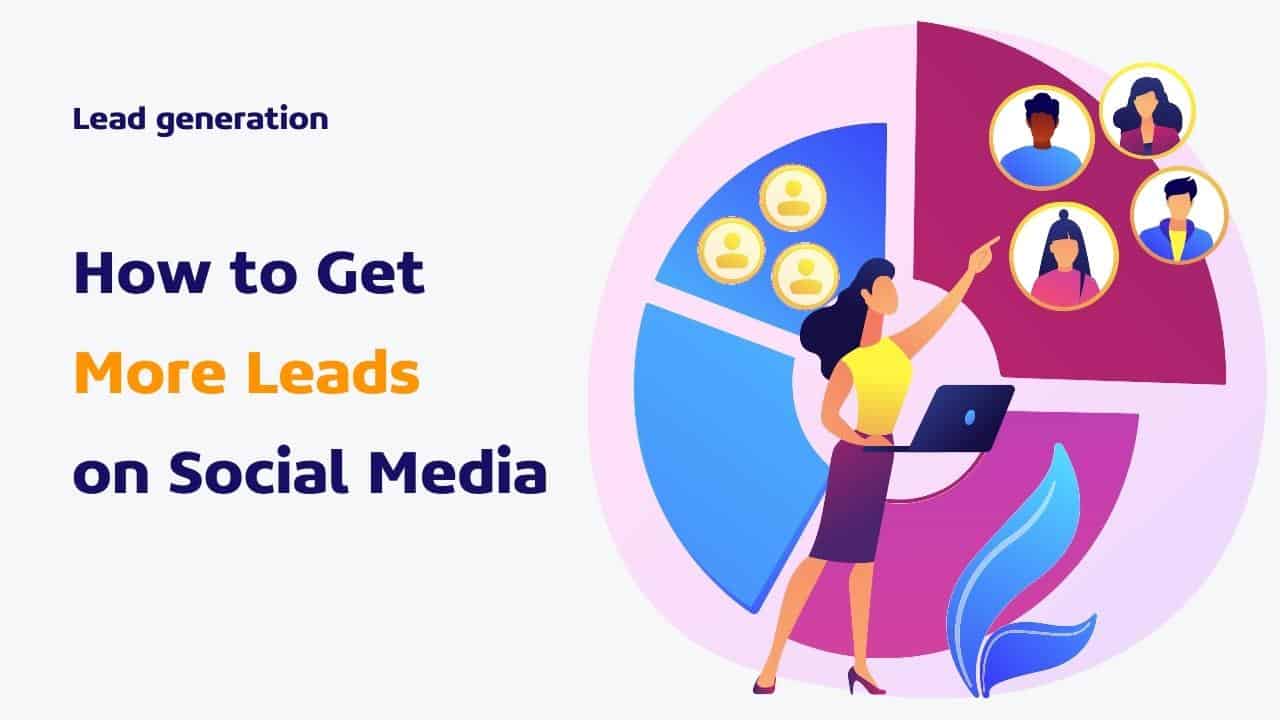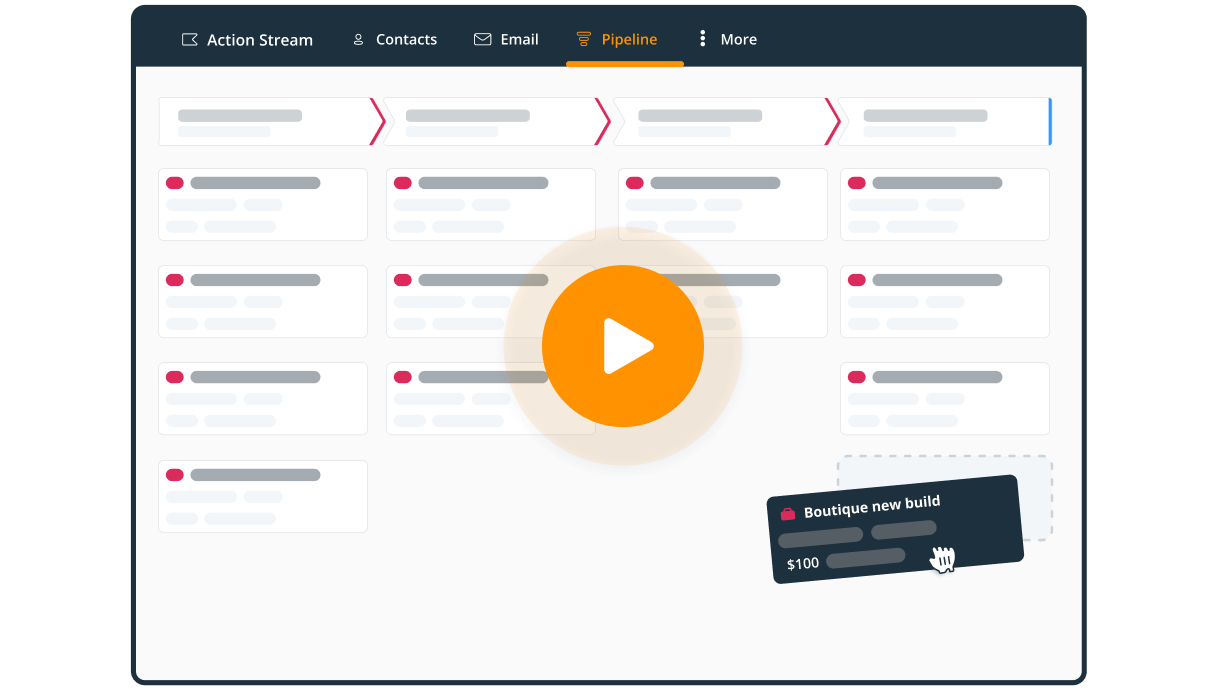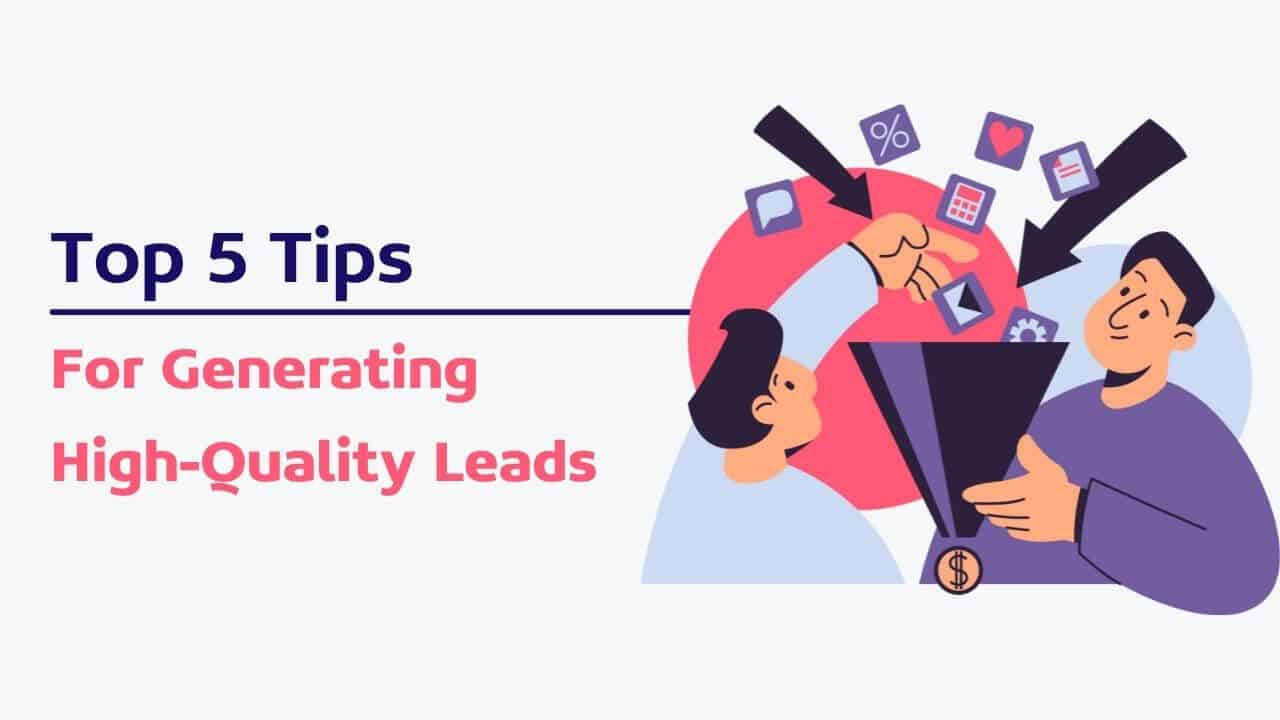

How to qualify sales leads? The ultimate guide to lead qualification

Have you ever poured hours into nurturing a potential lead only to find out they’re not a good fit for your product or service?
It’s a costly challenge for any business.
This frustrating scenario plays out far too often for sales teams because many neglect one of the most crucial steps in their sales process—lead qualification.
Proper lead qualification separates the curious from the serious buyers.
It’s the difference between wasting time and resources on unqualified prospects versus nurturing qualified, sales-ready leads into profitable deals.
In this post, you’ll learn how to:
- Develop a robust lead qualification process
- Ask the right questions to gauge buyer intent and readiness
- Make the most out of your lead nurturing activities
What is lead qualification in sales?
Lead qualification helps you focus your energy on potential customers who truly fit your target demographic. If done correctly, this process lets you find the leads that not only need what you’re offering but also have the budget for it, can make the decision, and are ready to talk business.
In sales, lead qualification comes down to getting to know your prospects better. It’s about identifying whether there’s a match between customer needs and what you have to offer.
Types of leads
Not all leads are created equal.
Besides marketing-qualified leads there are also sales-qualified leads—and there’s a difference between the two.
Here’s an overview to help you quickly grasp the differences:
| Lead Type | Definition |
| Unqualified Leads | Contacts who haven’t been assessed yet. They lack verified interest or fit. |
| Marketing Qualified Leads (MQLs) | Leads that have engaged with marketing efforts but are not ready to buy. They show some interest but need nurturing. |
| Sales Qualified Leads (SQLs) | Leads that are ready for direct sales engagement. They demonstrate intent and meet qualifying criteria (more on this below). |
| Product Qualified Leads (PQLs) | Leads that have used a product and shown buying signals. |
These aren’t just labels.
By categorizing your leads, you can find a better way to engage with them.
For example, pitching to an unqualified lead will most likely result in wasted effort. If someone is not ready to buy, it doesn’t matter how good your sales pitch is—you better focus your effort on someone else.
Why is lead qualification important?
By qualifying leads correctly, salespeople have a higher chance of success.
Lead qualification isn’t just a box to tick off. It’s the strategic cornerstone of your sales process.
Here are just a few reasons why lead qualification is so important for growing your sales.
1. Improved efficiency
If you’re juggling a dozen balls, it’d be nice to know which ones are made of glass and which are rubber.
Good lead qualification helps you gain that knowledge and helps your team prioritize their efforts. In this case, they’ll focus on leads that are more likely to convert.
2. Team alignment
Proper lead qualification aligns your sales and marketing teams. It ensures they work in sync towards a common goal. This alignment is especially important for a small business where resources are very limited.
3. Higher conversion
Qualified leads have a higher chance of converting into paying customers. They have already demonstrated interest and intent. This makes them more likely to make a purchase.
A good lead qualification process helps you identify sales-ready leads more accurately.
4. Lower costs
Pursuing unqualified leads can be costly in terms of time, resources, and effort.
If businesses focus on qualified leads, they can save money and allocate resources more effectively.
By spending your time on higher-quality leads, you can also create more accurate sales forecasts.
5. Better customer experience
Lead qualification allows you to find a way to resonate with each prospect.
It’s similar to being a thoughtful host who remembers which guest is allergic to peanuts. But in sales, instead of remembering allergies, good salespeople know how to make potential customers feel understood and valued.
These are just a few reasons why lead qualification is crucial for small businesses and sales professionals.
If you don’t qualify leads properly, your sales teams risk wasting their time chasing prospects that may never convert.
This can result in wasted effort, plummeting morale, and poor sales metrics.
What makes a good lead qualification process?
Here are five characteristics of a successful lead qualification process:
- Customizable. Your lead qualification criteria should be tailored to your business. Define what makes a lead ideal for you. Take into account their budget, authority, need, and timing.
- Flexible. A good lead qualification process should adapt to changing trends and customer behaviors.
- Measurable. A successful lead qualification process relies on quantifiable indicators. Lead quality and progress should be measured throughout your sales process.
- Cross-functional. Does your lead qualification waltz smoothly with the sales process? It should create a seamless alignment between your marketing and sales.
- Evolving. A good qualification process should be regularly scrutinized for performance. The best processes are the result of a lot of fine-tuning.
5 stages of the lead qualification process
A good lead qualification process allows your sales team to identify hot prospects and focus on them. This, in turn, improves your conversion rates and has a positive impact on your bottom line.
A lead qualification process typically involves five stages.
1. Analyze best customers
Find characteristics that all of your most profitable customers share. This will help you define your Ideal Customer Profiles (ICP).
If you have a clear picture of who your top customers are, you’re better equipped to recognize prospects with the same potential for success. This is not just about matching demographics but aligning with their behaviors, challenges, and needs.
By identifying the common threads among your best customers, you can fine-tune your lead scoring.
2. Identify qualifying criteria for leads
Once you analyze your current customer base for patterns (Step 1 above), you can use these patterns to create qualifying criteria for your leads.
Here are a few criteria to keep in mind:
- Budget. Can the lead purchase your product or service? You don’t want to focus your sales efforts on those who are just window-shopping. If the lead is not ready for a purchase, your marketing team should focus on nurturing them first.
- Authority. Is this the person who can pull the trigger? Salespeople often spend too much time qualifying leads that are not the decision-makers. Focusing on wrong leads will make it harder to close deals.
- Need. Does your product address their pain point? If you’re selling sand in the desert, you might not strike gold.
- Timing. Is the lead ready to buy now or is it better to reconnect later?
3. Develop a lead-scoring methodology
Lead scoring helps you decide who are the good leads.
Use the qualifying criteria from Step 2 to prioritize your leads. Usually, your best customers will fulfill most of them. The higher the overall fit is, the easier it’ll be to seal the deal.
Start by assigning values to each qualifying criterion.
For example, rate ‘budget’ from 1 to 10 based on the lead’s spending capacity. Do a similar assessment for ‘authority’, ‘need’, and ‘timing’.
Here, your goal is to get a score that reflects the lead’s potential.
Once you’ve scored your leads, define thresholds:
What score qualifies a lead for immediate sales engagement? What score signals that they need nurturing from marketing?
When developing your lead scoring system, consider past conversions. The leads that have already turned into customers share a certain score range. In lead scoring, it’s important to find empirical evidence, not follow gut feelings.
Adjust it as your business evolves and as you gather more data. This isn’t a set-and-forget system—it thrives on continuous refinement.
4. Ask the right questions
Asking your potential lead too many questions too early may put them off. At the beginning of the lead qualification process, you need to enquire only about essentials such as company size, years in operation, etc.
By asking these questions at the start of your process, you’ll be able to lay a good foundation and recognize potential bottlenecks.
Good salespeople have the intuition, experience, and know-how to be able to describe what makes a worthwhile lead to pursue, and what information they need to close a sale.
Asking the right questions is a much-needed skill, even in the AI-dominated digital world.
5. Focus sales effort on sales-ready leads
In lead qualification, look for leads who’ve shown clear signs of engagement. For example, they’ve interacted with your emails, downloaded your resources, or requested a demo.
Such actions suggest a higher level of interest and a readiness to talk business.
Zeroing in on sales-ready leads ensures time and effort are focused where it matters. This boosts efficiency and conversion rates.
Focus on leads who ask about pricing or specific product features—they’re often primed for a sale.
To ensure your attention is on the most engagement-ready prospects, try these techniques:
- Regular tracking. Keep your CRM updated. Log every interaction with leads and score them based on activities. The higher the score, the higher their readiness is.
- Frequent check-ins. Use check-in calls or emails as a casual way to gauge interest. Frame it like, “I noticed you checked out [X]. Is there something specific you’re interested in?” This isn’t just a follow-up. It’s active listening.
- Educational content. Share resources that address their needs. Give them the appetizer of targeted content. If they like it, they might be ready for the main course, which is a more in-depth conversation.
Lead qualification frameworks
Once you start researching the topic of lead qualification, you’ll notice how many frameworks exist.
There’s no right or wrong approach when it comes to qualifying your leads. Some frameworks will work better in some industries. Others will not work for your business. You might also need to mix a few different frameworks and combine them.
Regardless of which one you choose, revisit your metrics regularly and see what adjustments are needed.
Here’s a short overview of the top five lead qualification frameworks: their pros and cons.
BANT
BANT stands for Budget, Authority, Need, and Time.
The BANT framework helps sales reps determine a prospect’s viability by assessing budget, decision-making authority, specific needs, and purchase timeline.
- Pros: BANT is straightforward and easy to remember, which makes it ideal for businesses that are new to sales.
- Cons: This approach may be too rigid in some industries. Today’s buyer’s journey is more complex than ever before.
- Perfect for: Small businesses looking for a simple, time-tested method.
CHAMP
CHAMP stands for Challenges, Authority, Money, and Prioritization.
CHAMP flips the traditional sales script. It focuses first on challenges, enabling sales reps to establish value early in the conversation.
- Pros: This framework aligns with today’s selling approaches. Being customer-focused, it addresses pain points before budget talks.
- Cons: It’s not clear when the right time is to discuss the budget.
- Perfect for: Companies looking to take a more consultative, problem-solving approach to sales.
MEDDIC
MEDDIC stands for Metrics, Economic Buyer, Decision Criteria, Decision Process, Identify Pain, and Champion.
MEDDIC is a very detailed lead qualification process that encourages deep engagement with prospects to better understand their buying process.
- Pros: Encourages a thorough understanding of the lead. This can improve your close rates.
- Cons: It can be time-consuming, which may deter businesses looking for quick wins.
- Perfect for: Larger sales organizations or those dealing with high-value B2B sales.
ANUM
ANUM stands for Authority, Need, Urgency, and Money.
ANUM prioritizes the authority of the contact within the company. It ensures that sales reps are speaking with decision-makers.
- Pros: Helps validate that you’re engaging with a potential decision-maker early on.
- Cons: The need and budget may get overlooked initially. This can lead to challenges further down the line.
- Perfect for: Businesses whose sales cycles require sign-off from high-level executives.
FAINT
FAINT stands for Funds, Authority, Interest, Need, and Timing.
FAINT acknowledges that not every prospective buyer will have a set budget but they might still be worth pursuing if they show interest and have the need and timing for the product/service.
- Pros: Allows flexibility in dealing with prospects who might not have a pre-defined budget but have high potential.
- Cons: Can lead to longer sales cycles as it might involve creating demand and urgency.
- Perfect for: Creative and agile sales teams that are capable of nurturing leads that do not have immediate purchase intent.
The art of asking good qualifying questions
The most effective way to determine if a lead is sales-ready is through questions, whether via email, phone, or in person.
The right questions uncover their needs, assess budget and authority, and gauge their interest.
Here are a few practical tips to master this important skill.
1. Ask open-ended questions
Ask questions that require detailed explanations rather than one-word answers. This will encourage prospects to speak freely and provide information.
Examples:
- “What challenges is your team facing when it comes to [their needs]?”
- “How are you currently handling [relevant tasks/issues]?”
Go beyond the mundane ‘yes’ or ‘no’ answers.
2. Clarify their answers
Great questions are the result of great listening.
To ask insightful questions, you first need to understand your conversation partner.
A conversation with your lead should be just that—a conversation.
If your prospect has mentioned budget constraints, follow up and expand on this. This will help prospects open up about their true pain points. It’ll also make it easier for you to see how to align their needs with your solution.
3. Practice
The ability to ask good questions doesn’t happen overnight. It’s a cultivated skill that requires practice, patience, and curiosity.
To master this craft, you can study interviews conducted by seasoned journalists, role-play with peers, and record your sales calls. Keep practicing and reviewing.
4. Be genuinely curious
Lead qualification is most successful when you stay curious.
Consider immersing yourself in your prospect’s industry and company culture. Before the call, spend some time researching challenges and innovations related to their business. Ask them probing questions about how they tackle these challenges or introduce innovations.
This shows your prospects you’re invested in understanding their daily reality.
5. Build a narrative
Kick off your sales call with a broader question and then gradually zoom into the specifics.
It’s very similar to setting the stage before delivering the punchline.
You could start with, “I’m curious about the journey that led you here,” before honing in on, “Which of these challenges has been the trickiest to navigate?”
Most common mistakes in lead qualification
Understanding your prospects is the foundation of a successful lead qualification process.
Here are the most common pitfalls (and examples of how to navigate them).
| Common mistakes | Solution |
| Hesitation to disqualify | Set clear, quantifiable benchmarks for leads. If a lead doesn’t hit these milestones within a reasonable timeframe, don’t be afraid to cut them loose. |
| Overlooking mismatched goals | If a lead’s objectives don’t align with your solutions, it’s like trying to fit a square peg into a round hole. If there’s no match, it might be best to part ways. |
| Relying only on one qualification criteria | Just because a lead has the funds, doesn’t mean they’re ready to buy. Dive deeper into their challenges and goals during conversations. |
| No limit on follow-ups | If a lead consistently ghosts you, set a limit on follow-up attempts. Your time is better spent on leads who engage. |
| Focusing on the wrong person | Do you have endless conversations that are going nowhere? Verify if the lead can make purchasing decisions. No authority often means no sale. |
| Persisting to sell to disqualified leads | Sometimes, a lead is upfront about not being interested or happy with your offering. Take their feedback seriously. A ‘no’ is a ‘no’. |
| Not talking about money | Talking about money can be awkward. But it’s important to qualify your leads financially early on. If no budget or a major mismatch, move on. |
| Overlooking lead scoring | Without lead scoring, prioritization is difficult. Hence, valuable leads might not get the attention they need. Implement a good lead scoring system. |
| Neglect lead nurturing | Develop an automated nurturing sequence that educates and maintains interest over time, keeping your offering top-of-mind. |
Lead qualification as a foundation of your sales success
Every minute you spend on a lead that’s not going to convert is a minute lost on the one that could.
Lead qualification is one of the tasks that many salespeople unknowingly struggle with. If a lead is not qualified correctly, there’s a higher chance that they won’t convert later in the sales process.
That’s why lead qualification is the foundation of your sales success.










